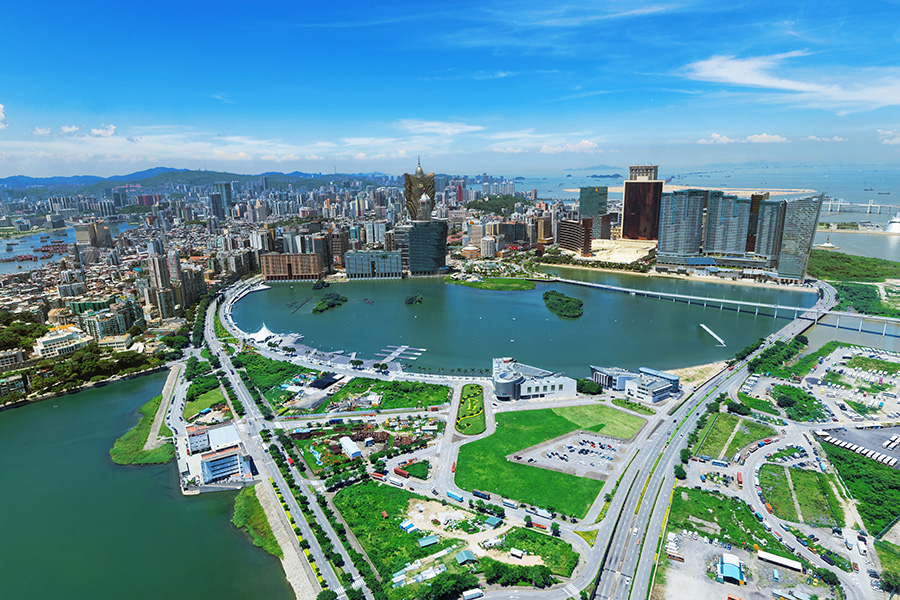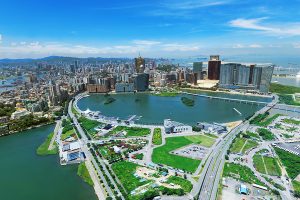Macau hotel occupancy rate reaches 93.5% in October

The average occupancy rate was up 7.2 percentage points in year-on-year terms.
Macau.- A survey from the Macau Hotel Association published by the Macao Government Tourism Office (MGTO) shows an average occupancy of 93.5 per cent in October, up 7.2 percentage points in year-on-year terms. All types of hotels saw a 2.8 per cent decline in rates, from MOP1,447.4 (US$180) to MOP1,406.2 (US$175).
The occupancy rate for 5-star hotels was 94.3 per cent while room rates declined by 3.6 per cent year-on-year, from MOP1,634.2 (US$204) to MOP1,575.6 (US$197). The occupancy of 4-star hotels was 89.4 per cent, down from 90 per cent for the first time this year. The room rate fell by 1 per cent, from MOP1,199.8 (US$150) to MOP1,187.4 (US$148).
The occupancy rate for 3-star hotels was 96.9 per cent, with the room rate falling from MOP975.7 (US$122) to MOP944.8 (US$118). In the first ten months of the year, Macau’s overall hotel occupancy rate stood at 91.4 per cent, up from 83.6 per cent a year ago. The average room rate rose from MOP1,337.4 (US$167) to MOP1,398.3 (US$174).
See also: GGR to reach US$30.2bn in 2025, analysts say
Visitor arrivals up 13.7% in October
The Statistics and Census Service (DSEC) has reported that 3,135,358 people visited Macau in October. The figure was up 24 per cent in year-on-year terms and up 13.7 per cent when compared to the previous month. That represents a recovery to 97.7 per cent of 2019 levels, before the Covid-19 pandemic.
Same-day visitors (1,789,072) rose by 23.2 per cent year-on-year and overnight visitors (1,346,286) by 3.1 per cent. The average length of stay shortened by 0.1 days to 1.1 days, with that of overnight visitors remaining unchanged at 2.3 days.
Mainland Chinese tourists accounted for the majority of arrivals at 2,263,443. That’s a rise of 16.1 per cent year-on-year and 96.6 per cent of 2019 levels. Those travelling under the Individual Visit Scheme (1,078,248) grew by 6.8 per cent in year-on-year terms. Visitors from the nine Pearl River Delta cities in the Greater Bay Area were up by 21.8 per cent year-on-year to 1,158,666. Visitors from the ten cities newly added to the Scheme grew by 4.2 per cent year-on-year to 40,105, with the majority coming from Xi’an, Harbin and Taiyuan.
Visitors from Taiwan reached 68,701, up 28 per cent year-on-year to 81 per cent of 2019 levels, while the number of tourists from the Hong Kong Special Administrative Region (Hong Kong SAR; 590,930) decreased by 0.2 per cent. International visitor arrivals reached 212,284, 98.8 per cent of 2019 levels. In year-on-year terms, the figure was up 31.2 per cent.
In terms of Southeast Asian markets, the number of visitors from the Philippines (38,924), Malaysia (15,926), Indonesia (13,625), and Singapore (9,558) increased by 30.3 per cent, 47.1 per cent, 0.3 per cent, and 1.9 per cent year-on-year, respectively, while visitors from Thailand (12,036) saw a decline of 14.5 per cent.
In South Asian markets, visitor numbers from India (8,148) rose by 29 per cent year-on-year. For the Northeast Asian markets, there was growth in visitors from the Republic of Korea (47,069) and Japan (9,594), which increased by 83.5 per cent and 23.5 per cent year-on-year, respectively. Concerning long-haul markets, the number of visitors from the USA (13,022) experienced a year-on-year increase of 20.8 per cent.








